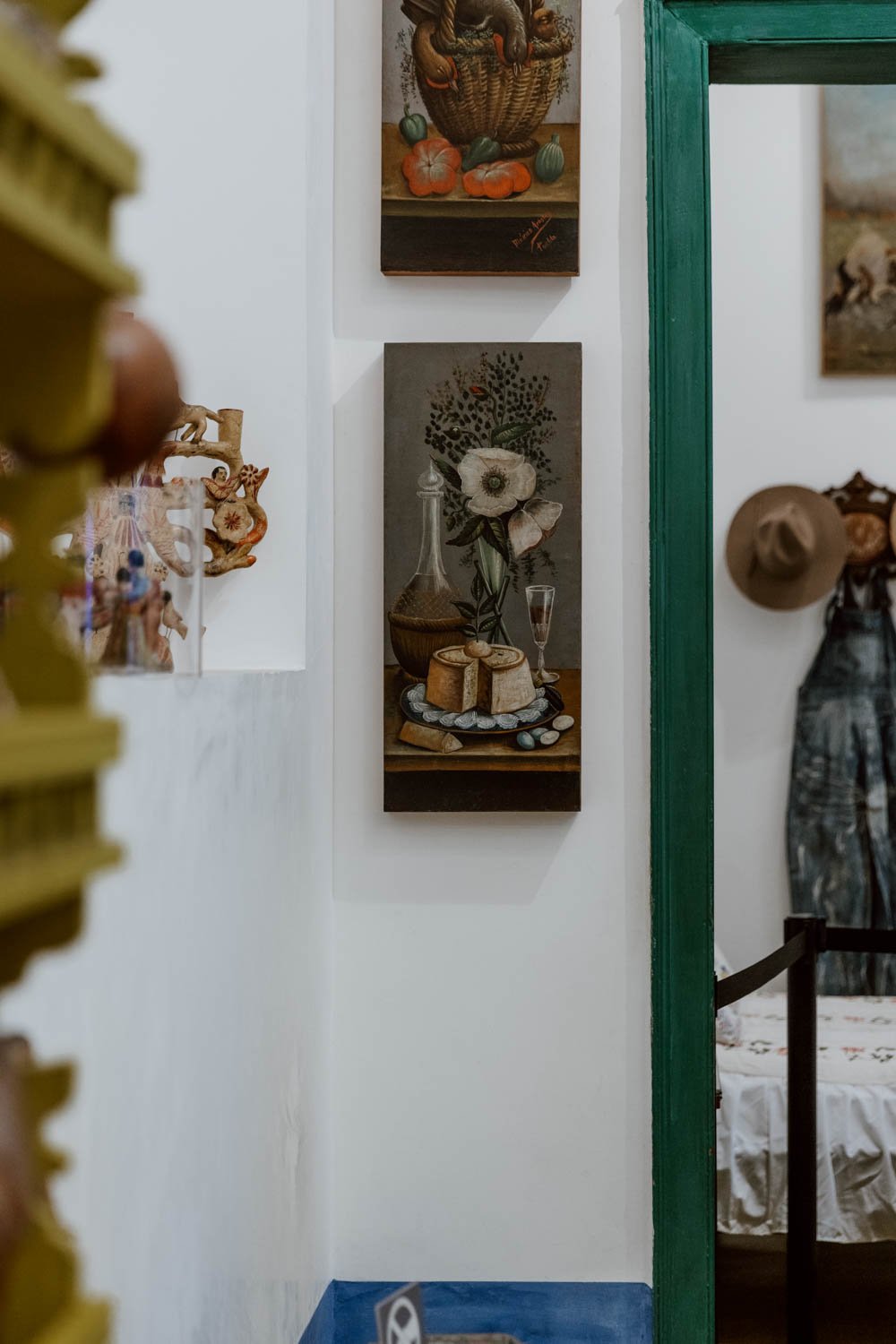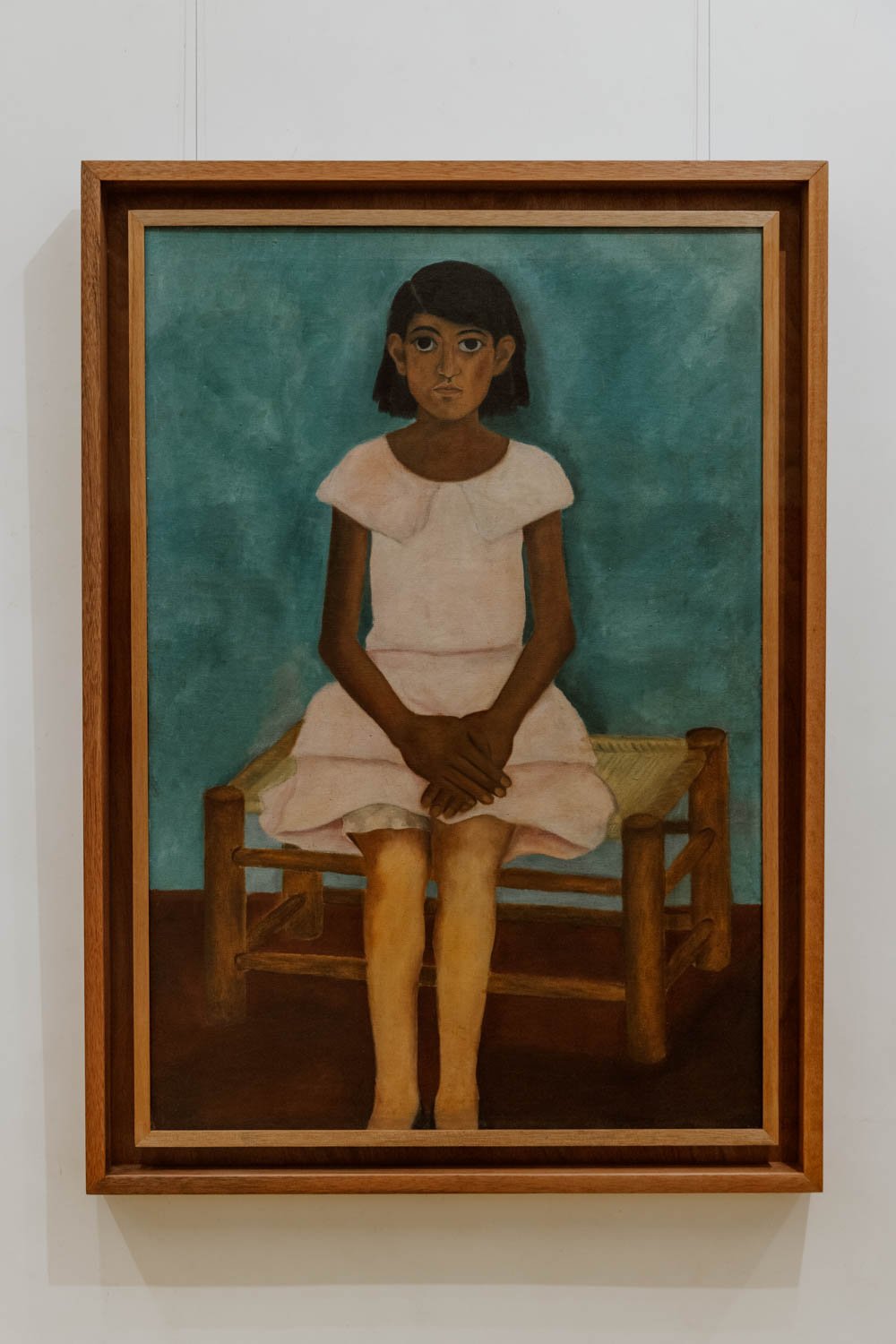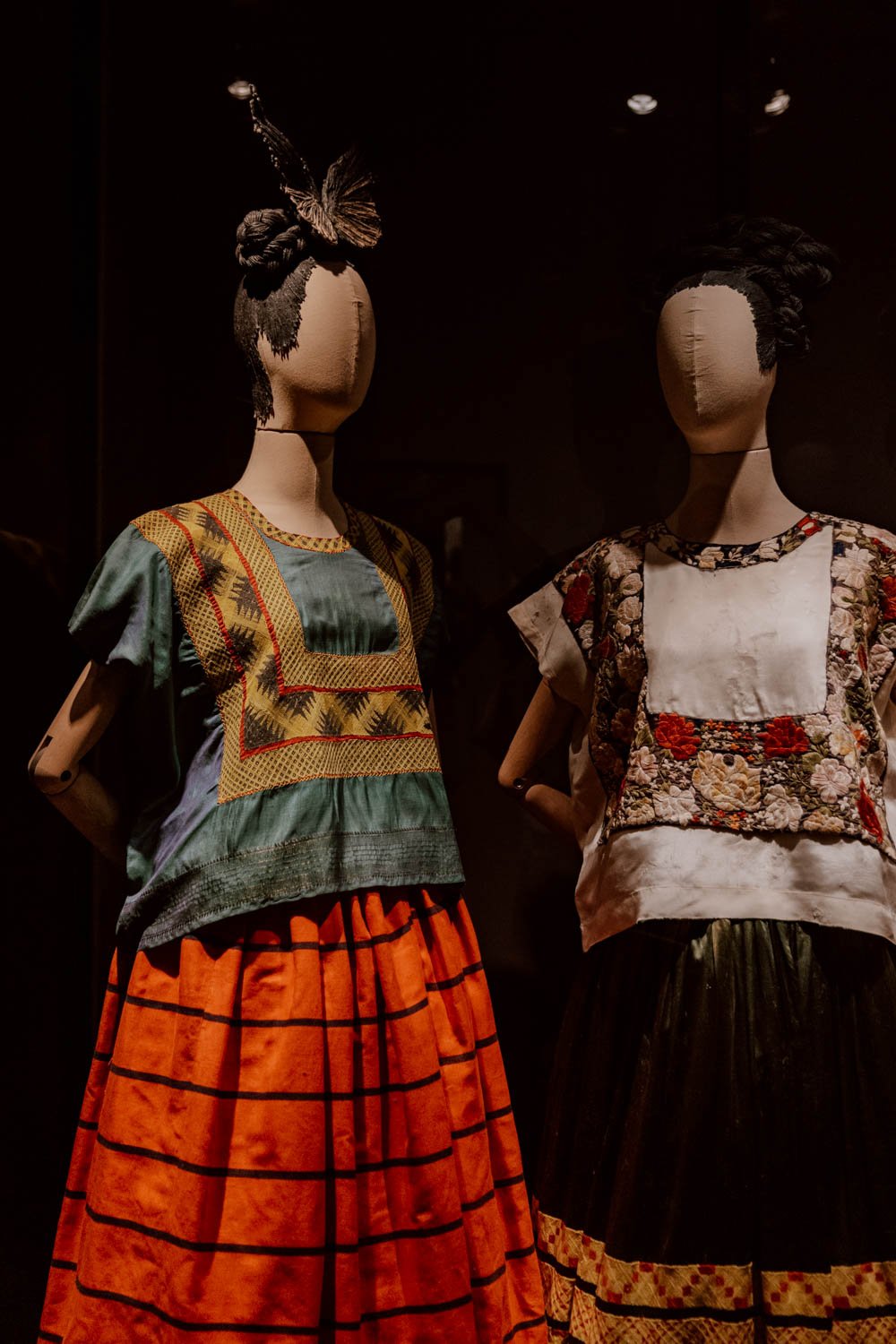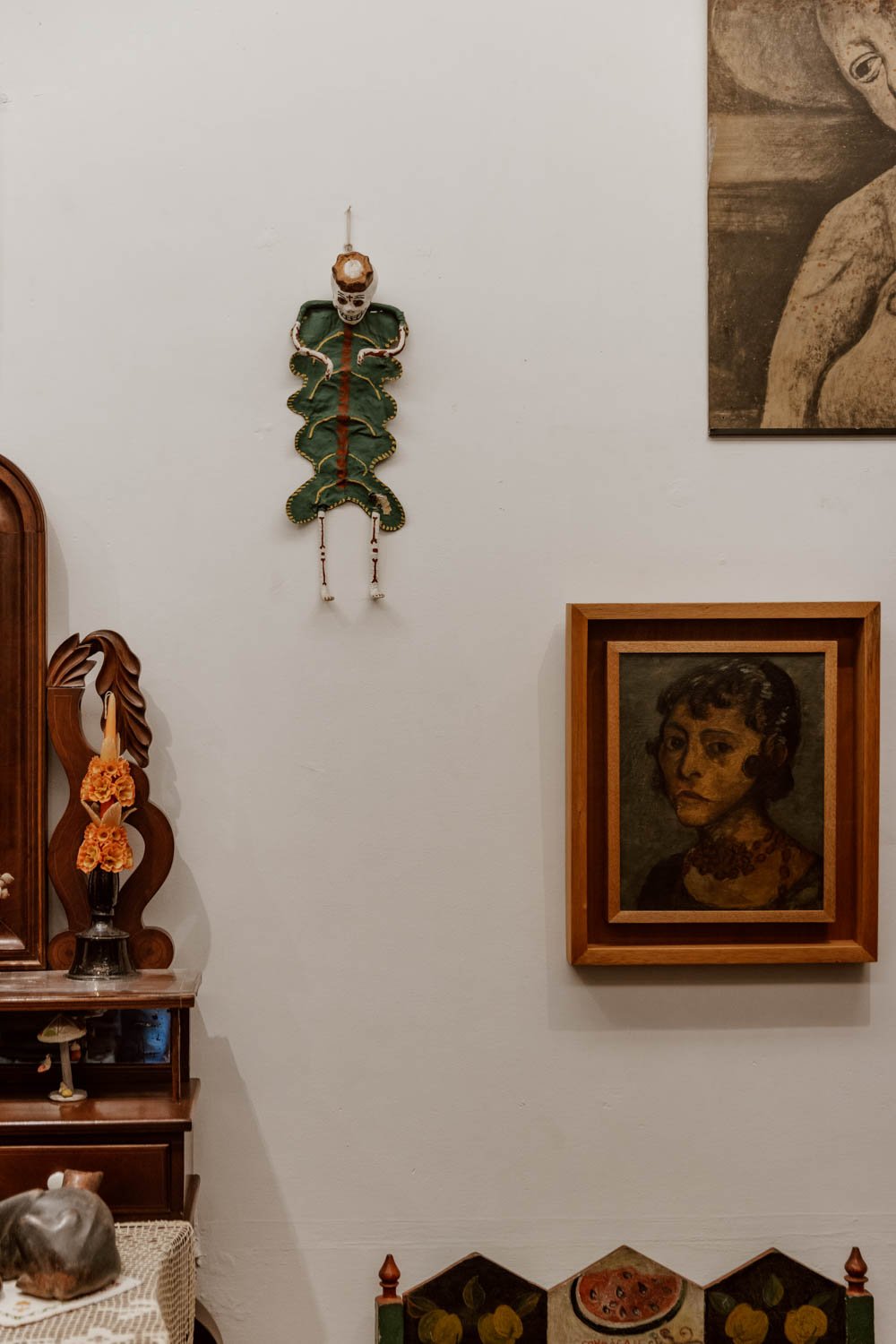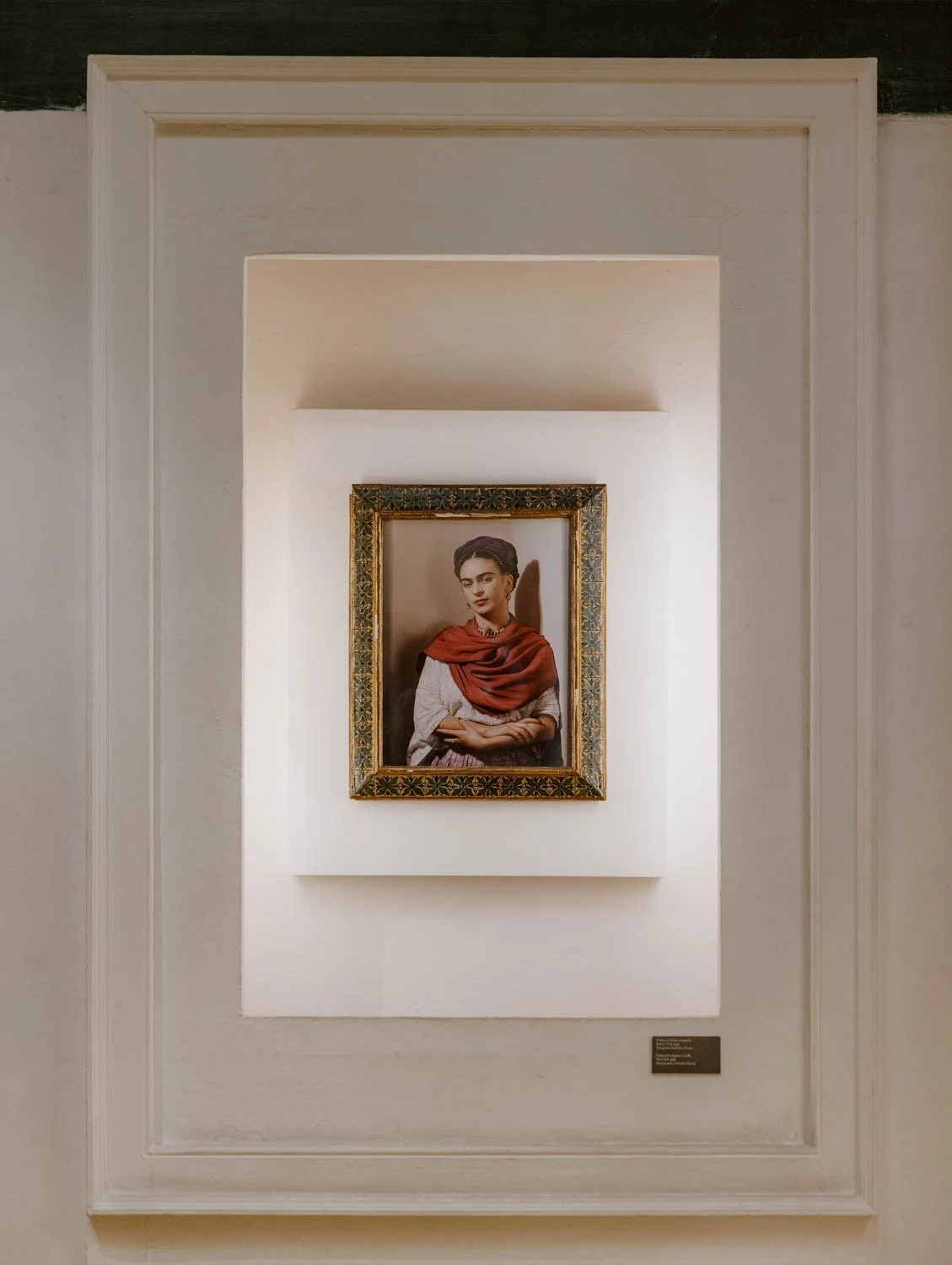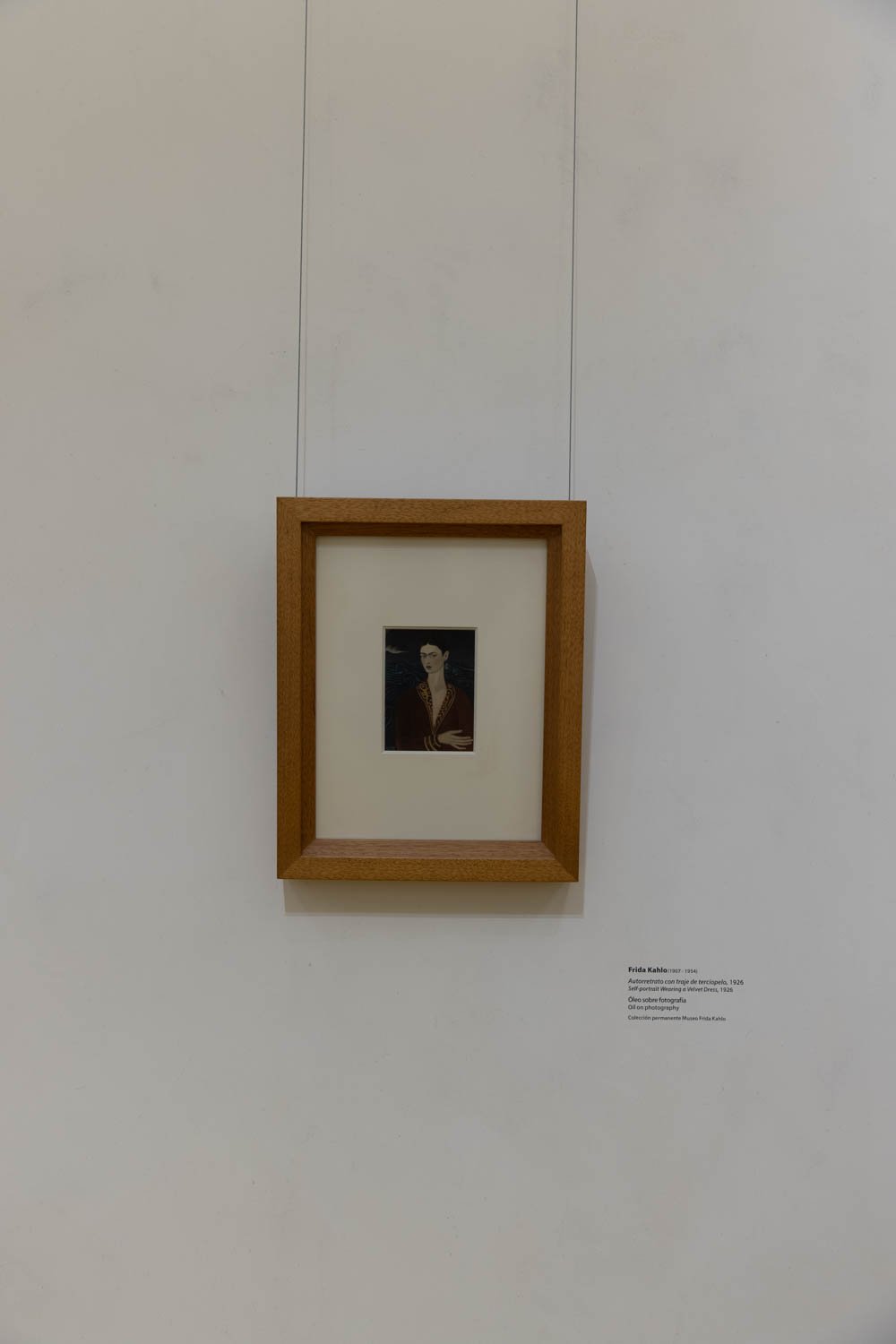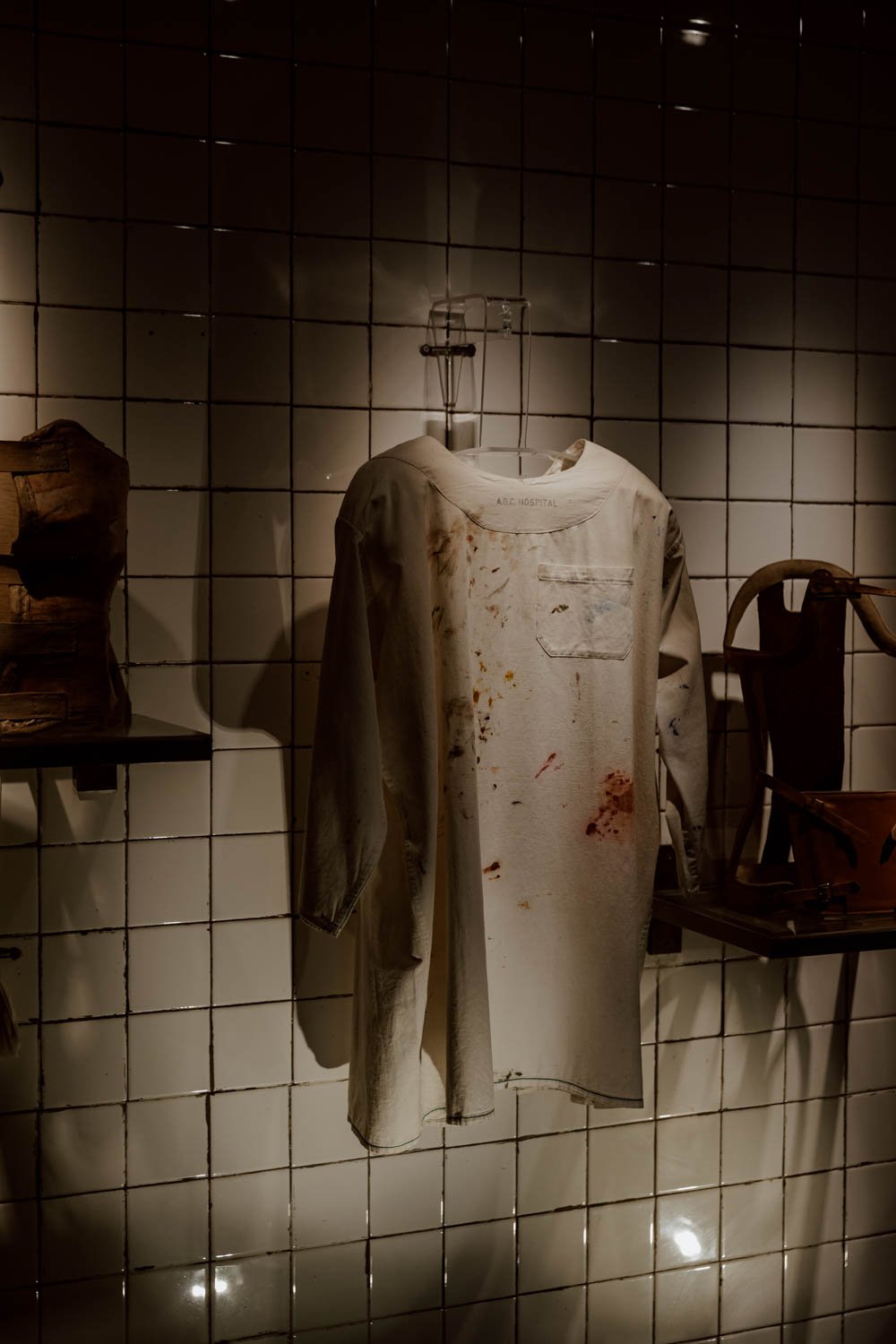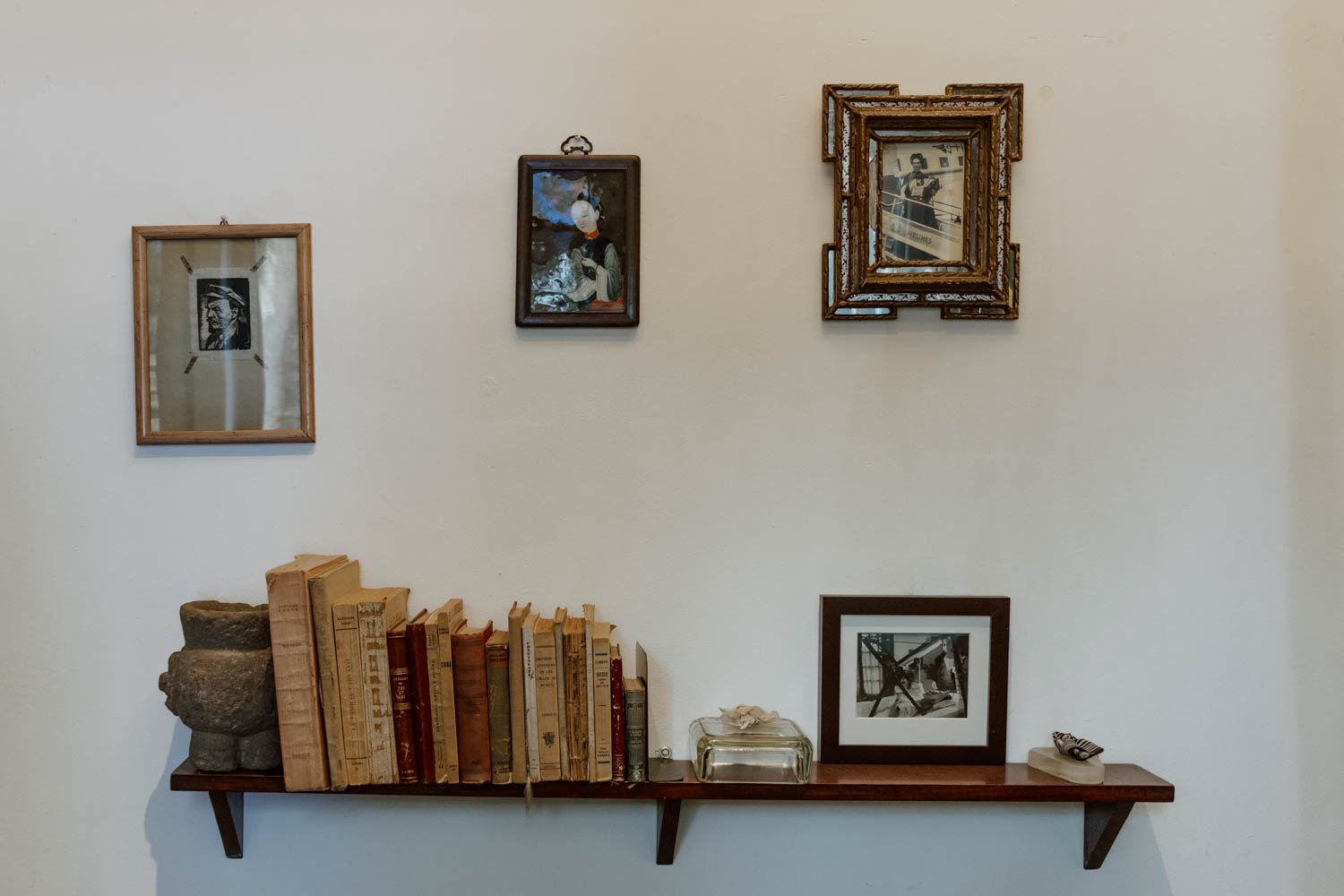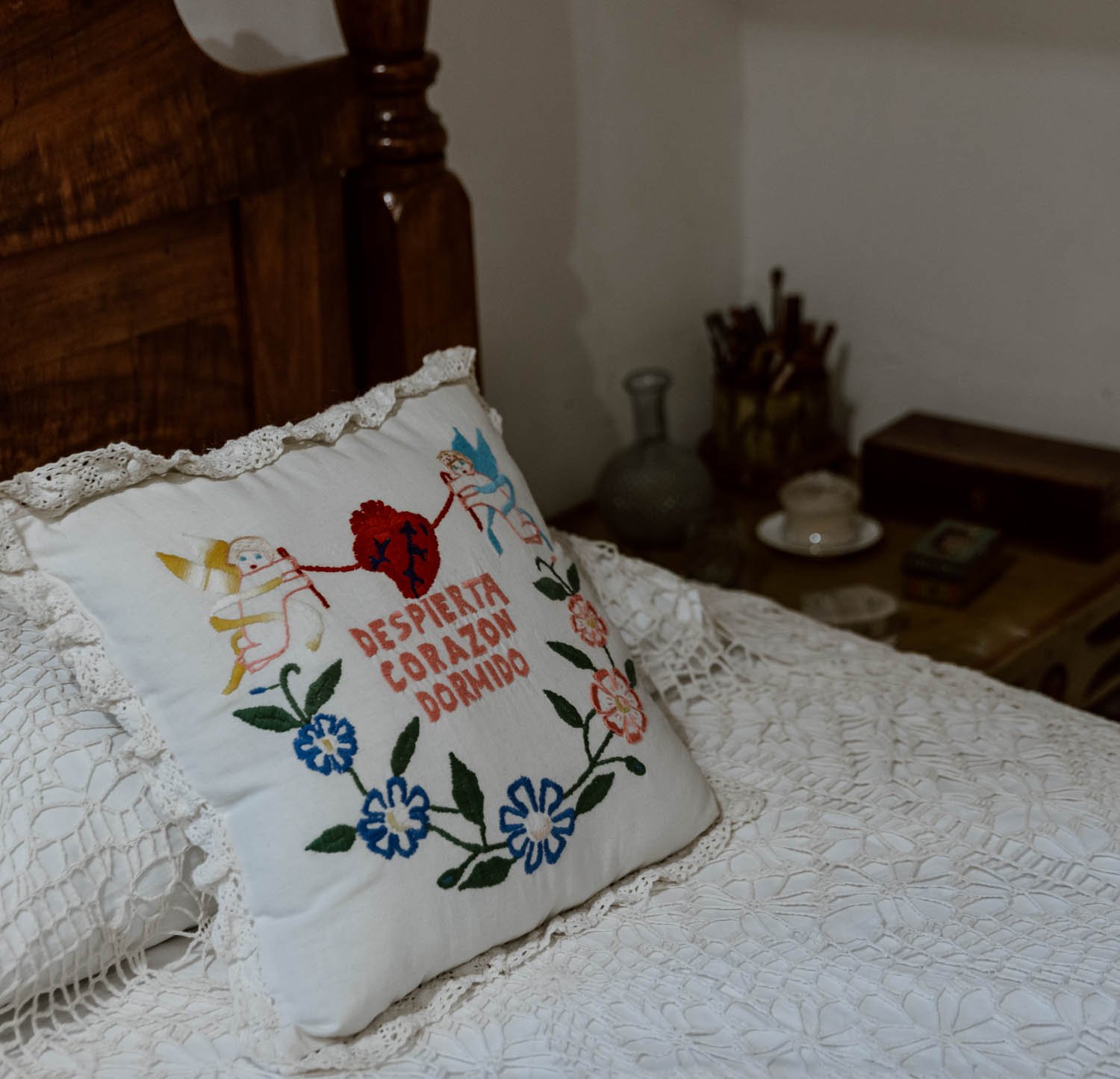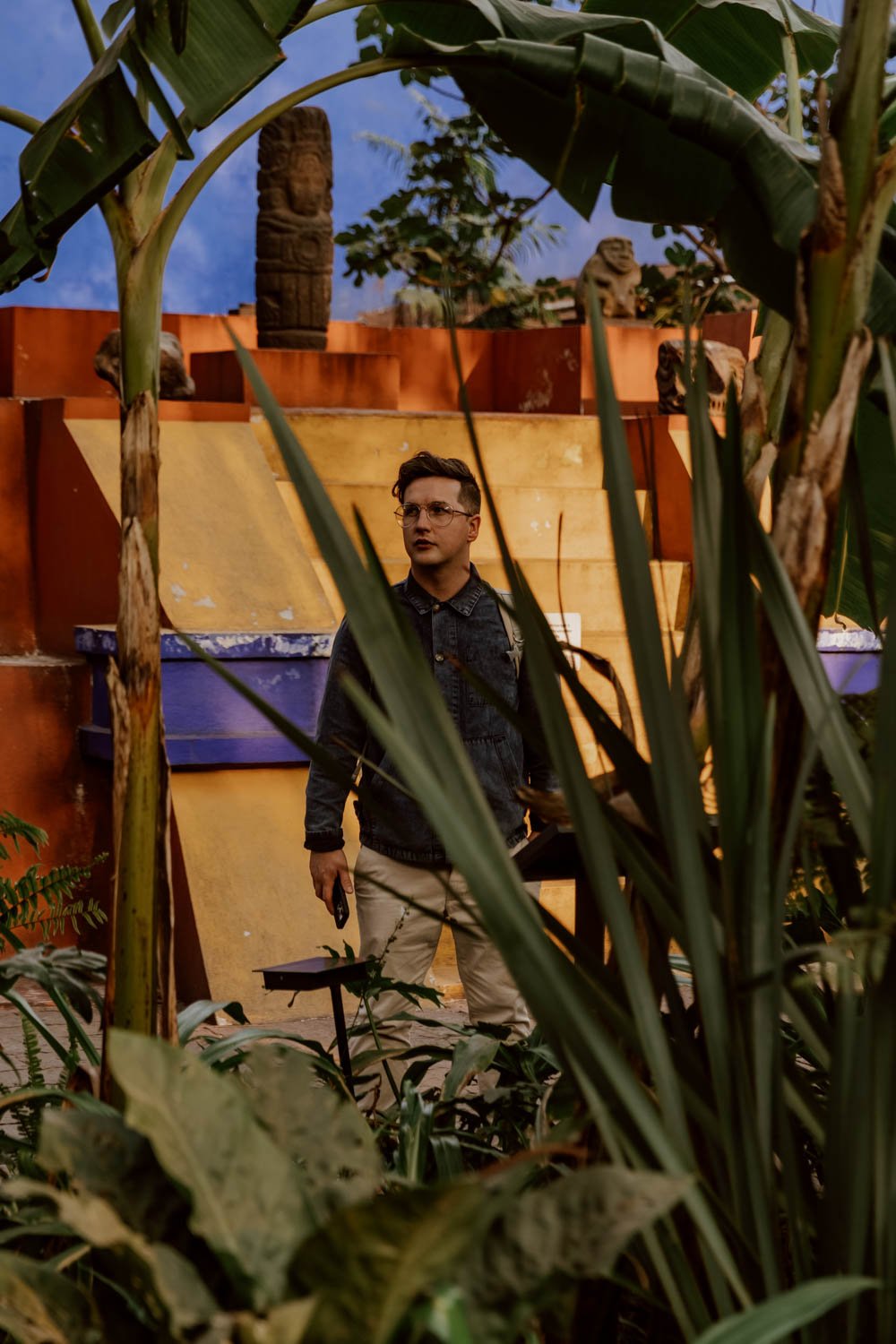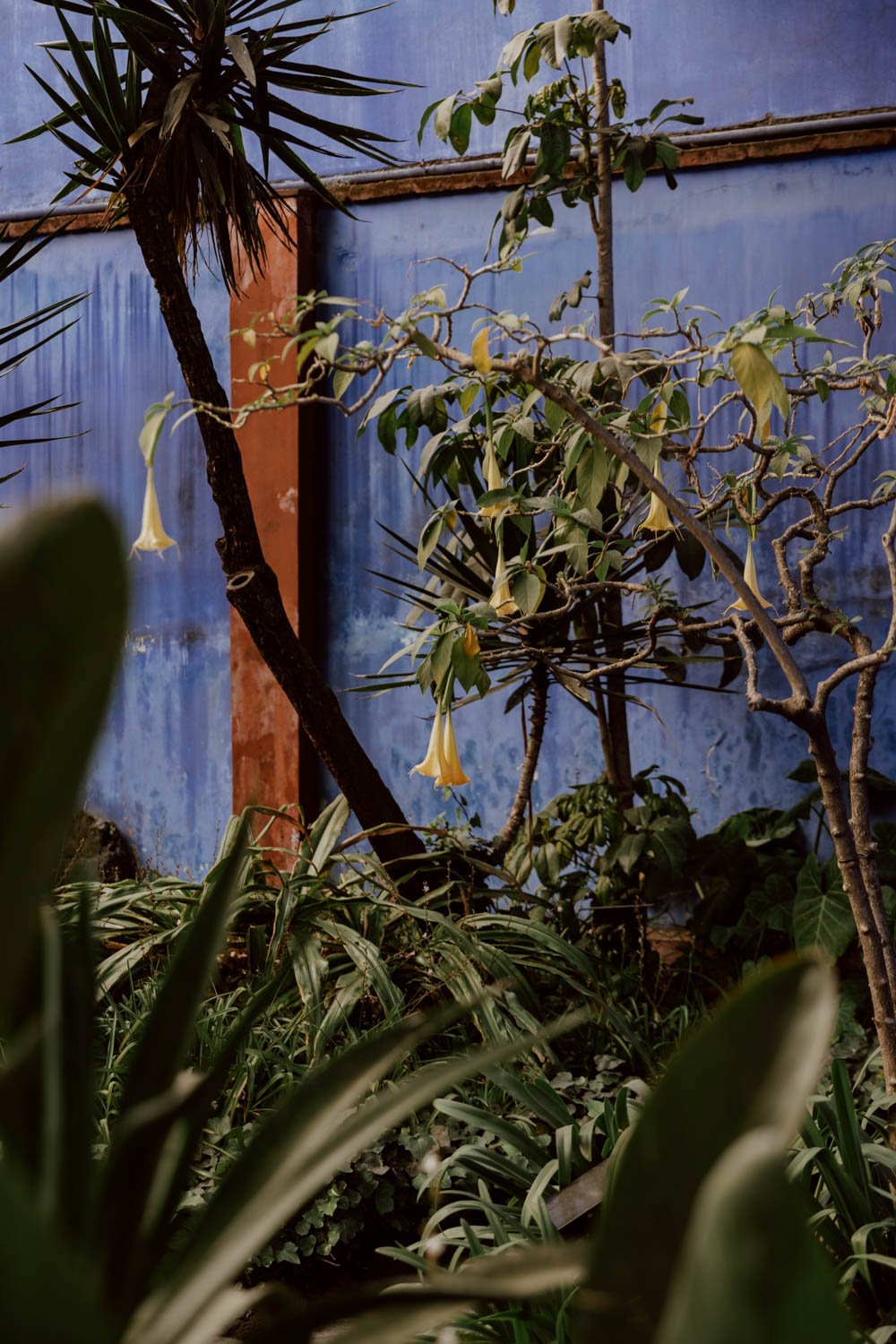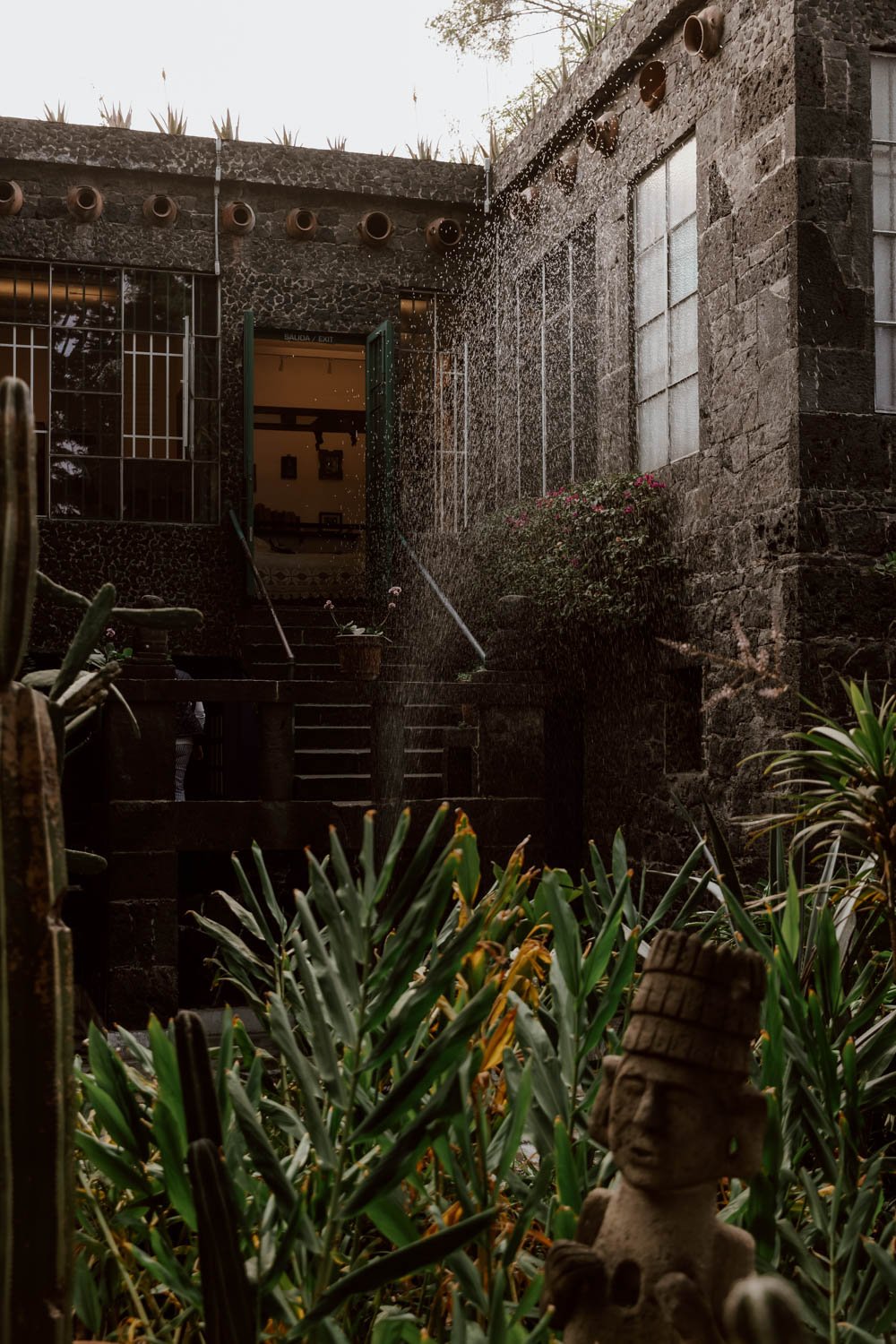If there’s one museum you absolutely have to experience in Mexico City, it’s Casa Azul. Also known as the Frida Kahlo Museum, in our guide you’ll find everything you need to plan your visit, including where to buy tickets, what to expect, how to get there, and a few tips to make the experience better.
If tickets are already sold out for your dates, you may still be able to find them on Tiqets, GetYourGuide or Viator.
Updated December 2023
“I leave you my portrait so that you will have my presence all the days and nights that I am away from you.”
Seas, skies, and horizon lines.
In nature, blue is limitless. It suggests a world of infinite possibilities, where today stretches into tomorrow and the world never ends.
Yet in the inhabited landscape, true natural blue appears so rarely, its presence usually crafted by human hands.
We can see it upon the walls of Musee Yves San Laurent in Marrakech, the hulls of fishing boats in Essaouira, the domed roofs of Santorini, and the blue cities of Jodhpur, Chefchouen and Sidi Bou Said.
In the painted world, it evokes a sense of freedom, imagination, inspiration, and calmness; for more modern artists the colour blue often represents hope. It speaks of open skies and of unhindered opportunity, of the healing nature of water, and the power of stormy seas.
It should come of little surprise then that Frida Kahlo’s house was to be painted blue.
Mexico’s most famous daughter, and one of the country’s most revered artists, Frida Kahlo lived a life that should have been a movie.
Born in 1907 into a wealthy family in a wealthy suburb of Mexico City, the course of her years were altered first by a severe bout of polio as a child, and then, indelibly, by a catastrophic bus accident at just 18 years old.
Finding first art, then communism, then Diego Rivera (her significantly older forever love, with whom she had a tumultuous on-again, off-again marriage), the remaining twenty nine years of her life were spent trying to understand her new broken body: a body marred by chronic pain, miscarriages, drug addiction, and more than thirty surgeries - a process that manifested in the creation of the intimate self-portraits for which she is now so well-known.
Three-quarters of a century after her death, her greatest works are scattered across the world, in museums, galleries and private homes, but the biggest part of Frida will always be in Mexico City, within the blue walls of the blue house; the home where she was born, raised, shared with the love of her life and died prematurely at the age of 47 with butterflies on the ceiling.
Four years later, in 1958 her family’s Blue House was converted into the part-gallery, part time capsule, part mausoleum you can step foot in today.
Now better known as the Frida Kahlo Museum, Casa Azul is one the city’s most popular sites and an essential addition to any first-timer’s itinerary.
Here’s everything you need to know to visit it.
How To Buy Tickets to the Frida Kahlo Museum
Opening times are from 10am to 6pm on Tuesdays and Thursdays through to Sundays . One Wednesdays, it’s 11am to 6pm and the museum is closed on Mondays. L
On any day, the last entry is at 5pm.
The standard Frida Kahlo museum ticket costs MX$250 (weekday visits), increasing to MX$270 for Saturdays and Sundays. Note that this is the price for foreign adults (approx. $13-15USD), as it’s cheaper for Mexicans.
For students with valid ID, it’s $50 and children under 12 are $25.
The tickets are limited to defined timeslots for arrival and entry, ands should be bought in advance via the museum’s official website. Given the popularity of Casa Azul, it’s really not a good idea to turn up without tickets.
However - and this is super important - tickets sell out very, very far in advance. If you leave it to a couple of days before you want to visit, there is a strong possibility that there will be none left to buy.
And having tried to buy tickets four days in advance, we know this from experience.
So, if you’re reading this and already know your dates for Mexico City, we recommend getting ahead of the game and booking your Frida Kahlo museum tickets sooner rather than later.
Thankfully, if everything is sold out on the official website, there are alternative options to the official site in the form of various tour operator aggregator sites, and this is the best way to get last-minute tickets. Unsurprisingly they do charge more for their Casa Azul tickets - and are probably part of the reason there are so few tickets available to begin with - but for the first-time visitor to Mexico City, they provide a lifeline to those less organised or out of luck.
We’ve linked below to the specific Frida Kahlo museum ticket page on each:
We’d recommend checking out all three of the above sites as when we arranged our tickets, they all had different timeslots available and the prices varied somewhat. It was obviously very frustrating that we had to spend more to get the standard tickets, but it was the only way we were going to make it in our final two days in Mexico City.
When we visited we saw quite a large number of tourists turn up without a ticket, spend a long time dithering about on their phone before admitting defeat and leaving; it is imperative that you do not simply turn up and hope. You will almost certainly be disappointed.
Plan // Buy tickets here on the official website, or here if they’re sold out already.
Whether you buy your admission ticket in advance from the official site or via one of the third-party websites, you will be emailed your ticket, which you then show on arrival to the museum. Remember to download or screenshot it your phone in advance of arrival, just in case you have internet issues.
They have a very organised system of queuing for timeslots, and you will be able to join the line around 15 minutes before your entry time, at which point someone will check your ticket.
How to Get to the Frida Kahlo Museum
Casa Azul can be found on Londres 247 in the leafy suburb of Coyoacán (here on Google Maps). Once a separate town in its own right, it has over time become absorbed into the sprawl of CDMX. It’s far quieter and calmer then downtown Mexico City, and definitely worth a stroll around if you’ve got a morning or early afternoon timeslot.
The nearest metro station is Coyoacán (maps), served by Metro Line 3. From here it’s a 20-minute walk to the museum.
Alternatively, you can do as we did and grab a taxi. Uber is a popular and easy way to get around CDMX, but be sure to leave plenty of time to reach the museum - traffic in the city is no joke! Travel time from downtown is going to be 30-45 minutes, and our Uber cost $200 one-way. There were also plenty taxi drivers and Ubers around for the return leg.
Note that it is absolutely not a good idea to try and walk this route.
We recommend giving yourself about 90 minutes inside Casa Azul.
The Camera Permit
As is surprisingly common across many museums in Mexico City, you are required to buy a specific permit if you’d like to take photos (without flash).
As we travel with a professional camera set-up we were expecting this - what we didn’t expect however is that even if you wish to take photos with your phone in the Frida Kahlo museum, you’ll still need to buy one.
These cost MX$30 per camera, and are purchased in cash upon arrival to the museum on the right hand side when entering through the main door. You will be given a sticker which you should place upon your person somewhere visible; the staff throughout the museum will be looking for them and they often intervene if someone without a sticker is doing anything with their mobile.
The conditions of entry state that no videos should be taken, but we didn’t see this being enforced.
Additionally, if you arrive with any size of backpack, you will be told put it on your front to avoid damaging any of the exhibits. They do have a cloakroom but this has been out of service for some time.
The Route Through the House
Upon passing through the main entrance (and buying your camera permit if needed), you will head around the corner to the left and into the ground floor of the house.
The first few rooms are focussed very much on Frida Kahlo’s own pieces of art, charting her progression from small child to grown woman. Be sure not to miss Viva la Vida (thought to be her last ever painting, completed just eight days before her death) and the spectacular self-portrait just before the dining room - you cannot miss it, it seems to glow with an ethereal light and was one of our very favourite elements within the entire house.
You will then pass through into the house proper, tracing a path through first the dining room, kitchen and Frida’s day bedroom on the ground floor, before heading up the stairs to the studio and upstairs bedroom.
Throughout the house there are strong indicators of both her political leanings (a fervent communist, photos of Lenin, Stalin and Trotsky are scattered throughout) and her physical struggles.
The death mask laid upon the small four-poster bed, and her ashes sat atop the dresser, are sombre reminders of Frida’s fragile humanity, even though she now feels like such a timeless icon.
The Crowds
The popularity of the Frida Kahlo Museum doesn’t just have an impact on your ability to buy tickets; it can also have a fairly significant impact on your enjoyment.
We’re used to spending quite a long amount of time in museums, taking in rooms and pieces slowly and with thought, and we could easily have spent at least another hour within the rooms of Casa Azul.
Unfortunately, the sheer number of people passing through the museum at any given time means that you simply can’t take as long as you may like to enjoy the space or the art. Instead, you essentially join a line to enter, and continue following this line until you pass through the exit. Linger too long at one point and you’ll inevitably feel as though you are holding up the people behind you, and it’s a cramped one-way system procession in certain parts.
This was the biggest frustration from our perspective, and did negatively impact our experience.
To maximise the time available, we’d recommend selecting the earliest or the latest opening time. It won’t remove the crowds in their entirety, but not having a large group ahead of you or right behind you will at least allow for the sensation of not being too rushed.
The Gardens
After completing your visit of the interiors of Casa Azul, you will pass into the gardens for which the house is probably most famous - namely because this is where you will encounter the myriad of cobalt blue walls.
The gardens themselves are verdant with native plants, flowers and cacti, and surprisingly peaceful considering the numbers of people that pass through. If visiting later in the day, be sure to take some time to simply sit and take in your surroundings, as the low golden sun bathes the garden in the most wonderful light.
The gardens also had a fantastic standalone display and study of Frida’s outfits, such a key part of her image and identity, and you need to make sure you have time for this. Asking one of the staff how long it’s going to be there for, she told us that it was temporary, but had been so for the last eight years…
You’ll also find bathrooms, a very small gift shop, seating, and a cafe here too. Before or after Casa Azul, we can recommend a fresh coconut from one of the gentleman outside the entrance.
find out more about Frida kahlo
Prior to your visit, you can gain a deeper understanding of her life, her loves and her work with these articles:
Frida Kahlo: Stranger Than Fiction | The Smithsonian Magazine
The Inconvenient Spectacle of Frida Kahlo | National Geographic
Diary Of A Mad Artist | Vanity Fair
Frida Kahlo & Diego Rivera - Romance & Heartbreak | Rise Art
Kahlo’s works are scattered across various museums and galleries throughout the world, but for visitors to Mexico City keen to see more, there are several more places to make a beeline for in addition to Casa Azul.
Museo Casa Estudio Diego Rivera & Frida Kahlo | This was the house Frida shared with Diego (and the architect who designed it, Juan O’Gorman), prior to her father passing her subsequent relocation to Casa Azul. Technically three properties linked by a walkway (reflecting the separate but interlinked lives they lived), Rivera’s house preserves his upstairs studio while Frida's and O'Gorman's have been cleared out for temporary exhibits. Find the museum here.
Museo de Arte Moderno | Located in Chapultepec Park, this museum houses a great number of modern art works, including several by Frida. Find the museum here.
Frida Kahlo Park | This small community park features three sculptures by the Mexican sculptor Gabriel Ponzanelli. You can find the park here in Coyoacán.
Museo Mural Diego Rivera | Initially located within Hotel de Prado, Riviera created a vast mural entitled Sueño de una tarde dominical en la Alameda Central. Following an earthquake the piece was relocated to a purpose-made space now called the Museo Mural Diego Rivera. Frida played no part in its creation, however she is one of more than 150 figures that feature within the painting. Find the museum here.
Dolores Olmedo Museum | This museum has several representative works by Frida Kahlo as part of its permanent collection, in addition to some by Diego Rivera. Find the museum here.
Where to Next?
13 Wonderful Things To Do in CDMX (published soon)
23 Things To Know Before You Visit Mexico City | A First Timer's Guide (published soon)
How to Get to Teotihuacan From Mexico City
How to Watch the Lucha Libre in Mexico City
Where to Stay in Mexico City (published soon)




